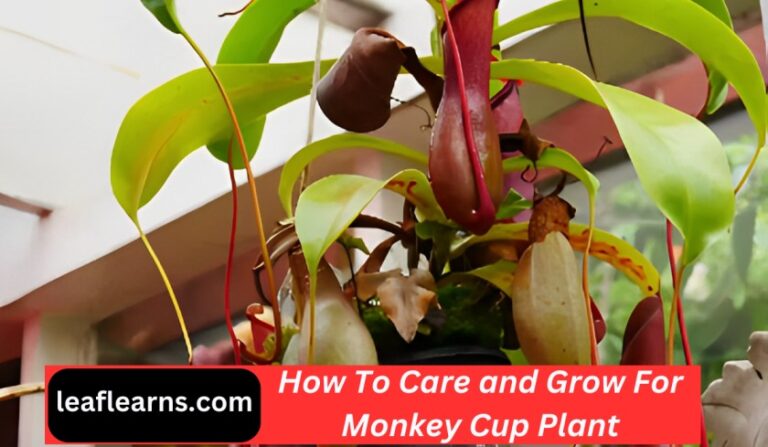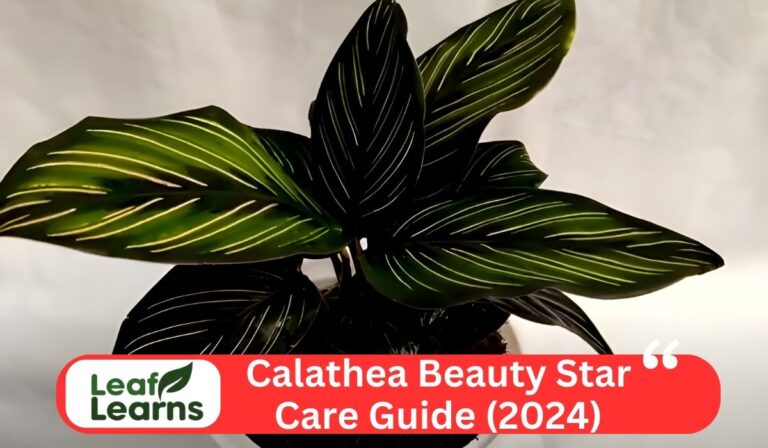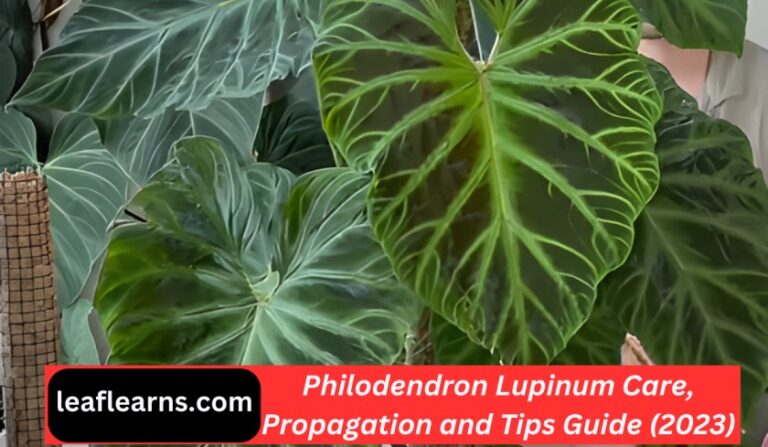Plumeria Yellow Grow, Care, and Guide Tips(2023)
The attractive blooming plant known as Plumeria yellow, or Plumeria rubra in its official name, is prized for its colourful and fragrant flowers.
This tropical beauty is distinguished by its eye-catching clusters of five-petaled, yellow blooms. Native to places like Central America and the Caribbean, plumeria yellow thrives in warm, subtropical temperatures.

This plant is seductive not only for its gorgeous beauty but also for its alluring scent. These fragrant flowers have a pleasant, fruity aroma that makes them ideal additions to floral displays and decorative gardens. Glossy green foliage on the shrub create a pleasing contrast with the bright yellow blossoms.
Plumeria-yellow is a favourite among garden lovers since it is simple to grow. It is moderately drought-tolerant once planted and thrives best in full sunlight and soil that drains well. The biodiversity of any garden is increased by its propensity to draw pollinators like butterflies and hummingbirds.
| Common name | Plumeria Yellow |
| Scientific Name | Plumeria spp |
| Family | Apocynaceae |
| Distribution | Central America, Caribbean, Mexico |
| Plant type | Flowering tree |
| Flower shape | Five-petaled, star-shaped |
| Growth rate | Slow |
| Leave colour | Dark green |
| Flower colour | Small, Yellow |
| Fragrance | Highly fragrant |
| Toxicity | Non-toxic to both pets and people |
| Light requirement | Bright indirect sunlight |
| Soil requirement | Well-draining, fertile soil |
| Watering Need | Moderate to low |
| Uses | Fragrance |
| Pest and Disease | Aphids, mealybugs, whiteflies, fungal disease |
| Leaf length | up to 4 cm long |

This plantnever ceases to enchant and motivate those who come into contact with its allure, whether it is as a decorative element in a garden, a source of fragrant blossoms, or an embodiment of cultural value.
In this comprehensive guide, we will delve into the world of Plumeria-Yellow, exploring its propagation, care, tips for growth, uses, benefits, varieties, appearance, foliage, flowering, size and growth, fragrance, toxicity for humans and pets, suggested uses, common problems, and how to combat pests and diseases.

Contents
- 1 Propagation
- 2 Care
- 3 Pruning
- 4 Why Do Plumeria Yellow Leaves Turn Yellow?
- 5 Seasonality
- 6 Uses and Benefits
- 7 Varieties
- 8 Appearance
- 9 Size and Growth
- 10 Fragrance
- 11 Toxicity for Humans and Pets
- 12 Suggested Uses
- 13 Common Problems, Pests, Diseases, and Growing Problems:
- 14 Understanding Yellowing Plumeria Leaves: Causes and Solutions
- 15 Captivating Plumeria Varieties: Pink and Yellow, White and Yellow, Red and Yellow
- 16 Conclusion
- 17 FAQs
Propagation
Before we dive into the care and characteristics of this plant, it’s essential to understand how to propagate this tropical beauty of the plant. It can be propagated through several methods:
Cuttings
The most common way of propagation is this one. To avoid rot, choose a good stem cutting that is 12 to 18 inches long and let it dry for a few days. It should be planted in a soil that drains well and kept wet as roots form.
Seeds
This plant may also be grown from seeds, although it takes more persistence to do so. The seeds should be sown in a soil that drains well, and it can take them many months to sprout.
Grafting
For more precise replication of a specific variety, grafting is a preferred method. A yellow plumeria cutting is attached to the rootstock of another plumeria plant.

Care
Yellow plumeria, like all plumerias, requires specific care to thrive. Here are some essential tips:
Sunlight
Make sure they get at least 6 to 8 hours a day of direct sunshine for these plants to grow.
Soil
Well-draining soil is preferred by this type of plant. It is best to combine potting soil with perlite or sand.
Watering:
Sparingly water the plant. To avoid root rot, let the soil dry out between waterings. It can might die if it is overwatered.
Fertilization
In the spring and summer, feed your plant with a well-balanced, water-soluble fertiliser. Feeding should be reduced or stopped during the winter months of dormancy.
Pruning
Remove dead or overgrown branches while pruning your plant to promote branching. This will make the plant bushier and more vivid.

Why Do Plumeria Yellow Leaves Turn Yellow?
All plants that utilise photosynthetic processes have chloroplasts, which harness the energy of sunlight to power cell division and growth.
Chlorophyll, a pigment found in the chloroplasts, is what gives leaves their lush green colour. The plant cannot generate enough chlorophyll under sub-optimal circumstances, which results in chlorosis, which causes the leaves to become yellow.
Chlorosis in plumeria can be brought on by a variety of things, such as excessive watering, a lack of nutrients, and an unbalanced pH of the soil. I’ll go through the reasons why leaves become yellow and what you can do to cure them.
What Causes Plumeria Leaves to Turn Yellow?
Yellow leaves on your plumeria are an indication that the plant is ill and unhappy. There might be a number of causes for this, so you should try to pinpoint the precise one and fix the issue as soon as you can.
Seasonality
Due to the fact that plumeria is a deciduous plant, its leaves will naturally turn yellow and fall off in the late fall. allowing the plant to be dormant over the winter so it can store energy and blossom in the spring.
Therefore, if your plant’s leaves are screaming as autumn approaches, there is no need to be alarmed; this is quite normal and a natural part of the plant’s yearly cycle.
On the other hand, yellow leaves in the summer might be problematic. Let’s now discuss the most plausible reasons.
Overwatering
The most typical reason for yellowing leaves in any plant, including plumeria, is probably overwatering. Because Plumeria prefers soil with good drainage, when the soil gets wet, there is less oxygen surrounding the root system, which can lead to root rot.
Standing water that hasn’t been drained and bacterial or fungal infections are frequent causes of root rot. It may occasionally be a mix of the three.
Yellowing leaves that eventually turn into mushy foliage are signs of root rot. Root rot will develop in the leaves if ignored, turning the stems of plumerias from brown to finally black.
An overwatered plumeria with root rot should be removed from its pot, the dirt should be brushed off to reveal the roots, and any remaining soil should be washed off with running water.
If your yellow leaf problem is caused by root rot, it will be simple to identify from the soft, mushy roots that have gone black and smell terrible.
You must let your plumeria completely dry out before repotting it with new soil in order to treat root rot. Make sure your container has enough drainage holes.
If your plumeria is in the ground, you must either stop watering it or increase the drainage by adding sand or grit to the soil.
Push your finger into the potting soil and make sure the top few inches of soil are dry before watering since potted plumeria like to dry out between waterings.
Uses and Benefits
Plumeria-yellow is highly prized in landscaping and gardening because of its many uses. In addition to being beautiful, the plant also serves a number of useful purposes.
Plucked flowers may be used to make beautiful floral arrangements, and because of their pleasant aroma, their scent is frequently used in perfumes, incense, and essential oils.
In addition, pollinators like butterflies, bees, and hummingbirds are drawn to the plant’s attractiveness, assuring pollination and fostering biodiversity in an environment.
Varieties
This plant exists in different variations, each with its unique characteristics. Some notable varieties include:
Sri Supak
Because of its striking yellow blooms with a crimson or orange centre, this cultivar sticks out. The compact growth pattern of Sri Supak plumerias makes them ideal for small gardens and containers.
Singapore Pink
Although this cultivar is most famous for its pink blossoms, it also occasionally yields bright yellow blooms. It is a small, slow-growing plant that is perfect for patio pots or bonsai aficionados.
Singapore Gold
Singapore Gold plumerias have golden-yellow blooms, as their name indicates. This cultivar is well known for its compact growth habit and medium to big flowers.
Appearance
Yellow plumeria boasts a stunning appearance that makes it a favorite among gardeners. This tropical beauty typically has a small tree or shrub-like growth habit. Its key characteristics include:
Foliage
Large, leathery, dark green, glossy leaves are a characteristic of the that plant. Even when the plant is dormant, the leaf gives it dimension and aesthetic intrigue. These leaves have an oval form and can become up to 12 inches long. The plumeria is a great option for garden designs because the foliage creates a beautiful backdrop for the vivid yellow blooms.
Flowering
One of its key draws are the gorgeous blossoms of plumeria-yellow. These flowers, which mostly bloom in the spring and summer, are created in clusters at the apex of the branches.
Each petal on the flowers’ distinctive five-petal design has a slightly pointed tip. A gorgeous shade of yellow that can range from light lemon to deep golden hues, plumeria flowers generally have a diameter of 3 to 4 inches.
The fragrant blossoms continue to bloom throughout the flowering time, pleasing your visual and olfactory senses.
Size and Growth
Size varies among that plants according on cultivation methods and environmental factors. A plumeria tree may develop to a height of 10 to 20 feet and a spread of 5 to 15 feet. However, one may limit their development to keep a more compact size, appropriate for smaller gardens or container planting, with correct pruning and management.
Fragrance
This plant seductive scent is one of its most attractive qualities. Anyone who inhales the delicious, rich aroma of the blooms is enthralled. The mixture of jasmine, citrus, and gardenia undertones is a common way to describe the scent. A few cut flowers placed inside may fill the space with their divine aroma, evoking a calm and tropical ambiance.
Toxicity for Humans and Pets
Although plumeria yellow is a beautiful addition to any garden, it is important to be aware of any risks it can provide to people and animals. All plant components, including the leaves, stems, and flowers, contain a milky sap that, when contacted, can irritate the skin or result in allergic responses. Ingestion can also cause digestive problems and stomach pain.
Suggested Uses
Plumeria yellow is useful in a variety of landscaping and gardening applications. since of its stunning appearance, it is a good choice for garden focal points since it lends any area where it is planted a tropical feel. The vivid flowers of this plant, which are frequently found in foundation plantings, dominate the show. It may also be cultivated as bonsai and in pots, allowing admirers to get a close-up look at its beauty. Yellow plumeria flowers are a common addition to bouquets and floral arrangements with a tropical theme because of their alluring scent.
Common Problems, Pests, Diseases, and Growing Problems:
Plumeria yellow, like any other plant, is susceptible to certain problems that can hinder its growth and overall health. Some of the common issues faced include:
Cold sensitivity
The plumeria yellow plant is quite susceptible to cold temperatures because it is a tropical plant. Frost or extremely low temperatures can harm or kill a plant. It is essential to give appropriate cover or bring potted plumeria indoors during the winter months to guard against cold.
Overwatering
Root rot and other problems connected to water might result from overwatering. Plumeria yellow is best in slightly drier environments and requires well-draining soil. Avoid letting the plant stay in standing water by only watering it when the soil is dry to the touch.
Aphids
The succulent foliage and blossoms of the plumeria yellow plant draw these tiny, pears-shaped insects. Aphids consume plant sap, which can lead to deformed growth, the production of sooty mould, and the production of sticky honeydew that draws ants. Aphid numbers can be managed by routinely checking the plant and applying insecticidal soap.
Spider Mites
Although these small pests are sometimes difficult to see, their presence can result in obvious damage. Spider mites take the sap from the leaves, which causes them to yellow, brown, or seem stippled. Spider mites can be managed by applying insecticidal soap or water-spraying the undersides of leaves.
Black Tip Fungus
The darkened, deformed, or necrotic leaf tips caused by this fungus disease can be seen on the leaves of plumeria yellow plants. Black tip fungus may be avoided with proper cultural practises, such as avoiding overhead watering and enhancing air circulation. If the issue persists, fungicides might be employed as a last option.
Overwatering and Underwatering
| Aspect | Overwatering | Underwatering |
|---|---|---|
| Effect on Leaves | Turns yellow due to smothering, may turn brown | Turns yellow, dries out to brown, and falls off |
| Nutrient Absorption | Prevents absorption of nutrients from the soil | Lack of water hinders nutrient transport |
| Leaf Health | Deteriorates as the plant cannot produce nourishment | Deteriorates due to insufficient water |
| Root and Stem Issues | Stem and root rot can occur, leading to further problems | May not develop a strong root system |
| Frequency of Watering | Requires less water, especially during root development | Water right after planting, then every two to three weeks |
| Watering in Specific Conditions | Watering once or twice a week in hot, sunny conditions | Adjust watering based on heat, light, and leaf production |
| Winter Dormancy | Stop watering during dormancy; resume when leaves emerge | Be cautious during dormancy to avoid plant death |
How to fix it
Fortunately, determining this is as easy as feeling the ground. Before watering your plumerias, do this. Measure the moisture in the soil by sticking your finger a few inches down. It’s time for a long, deep sip if it is very plainly dry. To rehydrate the soil and the plant, water the plant right away at the soil level.
If you discover that the soil is still quite moist, wait a few days before trying again. Generally speaking, plumeria soil has to be “just dry” before watering. They are accustomed to both the frequent dry spells and copious amounts of rain that are typical in the tropical regions they are native to.
Improper sunlight
Because they are tropical plants, plumerias like the sun. They may become yellow if they are not receiving enough. This is due to the fact that the light is necessary for the photosynthesis process, which is how your plants produce food.
There won’t be enough nutrition if your plumerias don’t get enough sunlight. Thus, it will have yellow leaves. Although yellowing may sometimes result from too much sunshine, plumeria plants that love the sun are less likely to experience this. It’s also important to understand that a lack of sunshine will result in fewer blooms.
If you have indoor potted plumerias, move them outside from June through late August so they may enjoy the summer sun. It’s acceptable to keep your plant indoors and next to a window throughout the autumn and winter so it may still receive some indirect sunlight.
How to fix it
Whether your plumeria is receiving too much or not enough sun, the solution is straightforward. The amount of sunlight your plant receives should be adjusted so that it receives enough for growth but not so much that it burns the plant.
You may either locate a new, permanent spot for your plant or move it about your home at specific periods of the day.
Soil conditions
Unfavourable soil conditions can undoubtedly cause yellowing in plumeria leaves. For plumerias, well-drained soil is essential since poor drainage can lead to waterlogging, which is bad for the health of the plant.
Regardless of whether you are planting your plumeria inside or in a container, use a suitable, well-draining soil. This also helps the roots of your plants to breathe; we shall discuss compacted roots in a later section along with how they might result in fading foliage
The pH of the soil around your plumerias is another thing to think about. Plumerias prefer a soil pH between 6.4 and 6.8, which is somewhat acidic. Anything lower or higher might cause issues for the plant, which would result in yellowing.
How to fix it
You may buy a testing kit to find out the pH of your soil, which is readily accessible at most garden supply stores. You can add alkalinizing chemicals like agricultural lime if the soil is excessively acidic.
You can add organic material, like as compost or peat moss, to too alkaline soil to lower the pH. As the bed is raised by the addition of organic debris, drainage is also enhanced.
Root damage
| Aspect | Root Damage |
|---|---|
| Cultivation Method | Plumerias are typically cultivated in pots in the US |
| Seasonal Transitions | Potted cultivation for easier seasonal transitions |
| Risk of Root Damage | Potential for root damage in potted cultivation |
| Impact on Leaves | Root damage may hinder nutrient supply to leaves, causing yellowing |
| Causes of Root Damage | – Use of harsh instruments during handling |
| – Compression of roots within a too-small container | |
| Prevention Strategies | – Start with a 6-inch pot and increase size each spring |
| – Provide an appropriately sized container to accommodate root growth | |
| Container Size Guidance | Start with a 6-inch pot, increase by one size each spring |
| Expected Growth | Plumeria tree may grow tall, reaching around 5 feet in height |
| Optimal Container Size | When the tree is about 5 feet tall, consider a 5-gallon container |
How to fix it
If your plant is an indoor one, make sure the container is the appropriate size. If it’s an outdoor plant, make sure there are no unhealthy plants close by in your garden to prevent the infection from getting to the plant’s roots.
If your plant develops root damage, you can remove it, use a fungicide to clean the roots, and then replant. Unfortunately, a plant often dies when it suffers from extensive root damage, which can lead to health issues.
Understanding Yellowing Plumeria Leaves: Causes and Solutions
Plumeria enthusiasts often encounter the frustrating issue of their plumeria leaves turning yellow. This phenomenon can be attributed to various factors, including changes in environmental conditions. Plumeria leaves may start curling and turning yellow when they experience stress, such as fluctuations in temperature and humidity.
Additionally, repotting plumeria plants can also lead to leaves turning yellow as they adjust to their new environment. While some yellowing can be natural, it’s essential to monitor the situation closely, especially when accompanied by brown spots or falling leaves, as these could indicate underlying problems like pests or diseases.
To maintain the vibrancy of your plumeria, understanding the causes of yellowing leaves and promptly addressing them is crucial.
Captivating Plumeria Varieties: Pink and Yellow, White and Yellow, Red and Yellow
In the world of plumeria, enthusiasts often seek unique and vibrant flower varieties. Pink and yellow plumeria, white and yellow plumeria, and red and yellow plumeria are highly sought-after choices due to their striking and colorful blooms.
Common yellow plumeria varieties, such as Hawaiian yellow plumeria, are often propagated from plant cuttings, allowing enthusiasts to cultivate these beautiful flowers.
When caring for these plumeria varieties, attention to detail is key, as issues like yellowing leaves or yellow spots can detract from their beauty. Proper care, including monitoring for diseases, providing adequate sunlight, and avoiding overwatering, can help maintain the health and vibrancy of these captivating pink and yellow plumeria flowers.
Plumeria, with its vibrant and fragrant blossoms, has become a beloved addition to gardens around the world. Among the various plumeria varieties, the Plumeria Yellow stands out for its stunning yellow flowers that bring a burst of sunshine to any landscape.
Conclusion
With its eye-catching yellow blossoms, alluring scent, and several applications, plumeria yellow is a plant that enhances the attractiveness of any garden or landscape. The benefits of growing this plant surpass the few minor difficulties and maintenance it needs. You may enjoy the beauty and charm of plumeria yellow for years to come by taking the right measures, offering the right growth conditions, and quickly resolving any concerns that crop up.
FAQs
What is the yellow plumeria called?
Plumeria rubra yellow : Frangipani tree – Yellow. Family : Apocynaceaes.
Why is plumeria turning yellow?
Due to overwatering, nutrient deficiencies, and incorrect soil pH.
How do you take care of yellow plumeria?
Plumerias require at least a half day of direct sun to flower, but perform best in full sunshine
How fast does yellow plumeria grow?
The final determinant of a plumeria’s growth rate is its species and the environment, but with the right care, you may increase it to 12 inches each year.
Can you grow plumeria in pots?
The secret to successfully growing Plumerias in pots is selecting the correct container.






